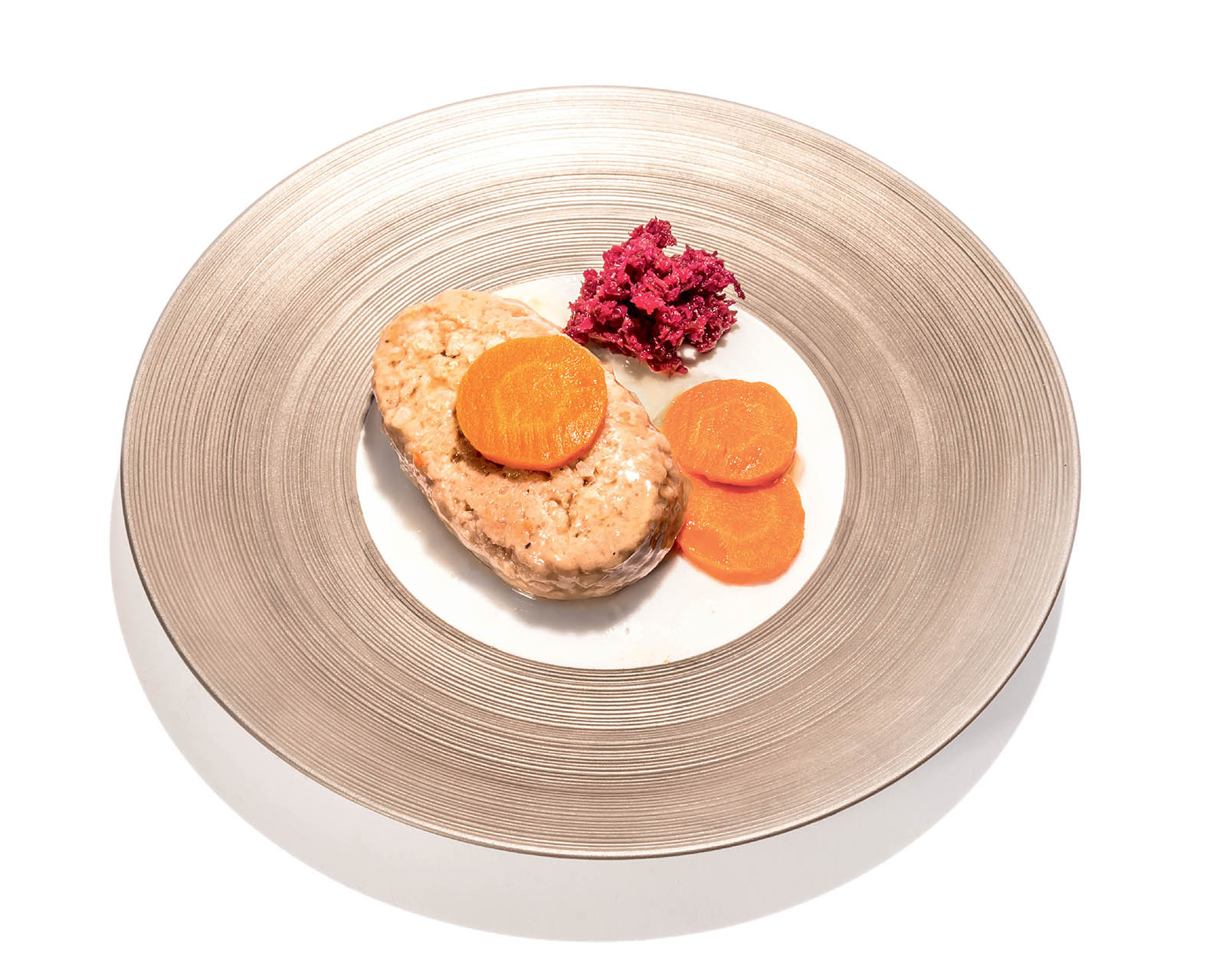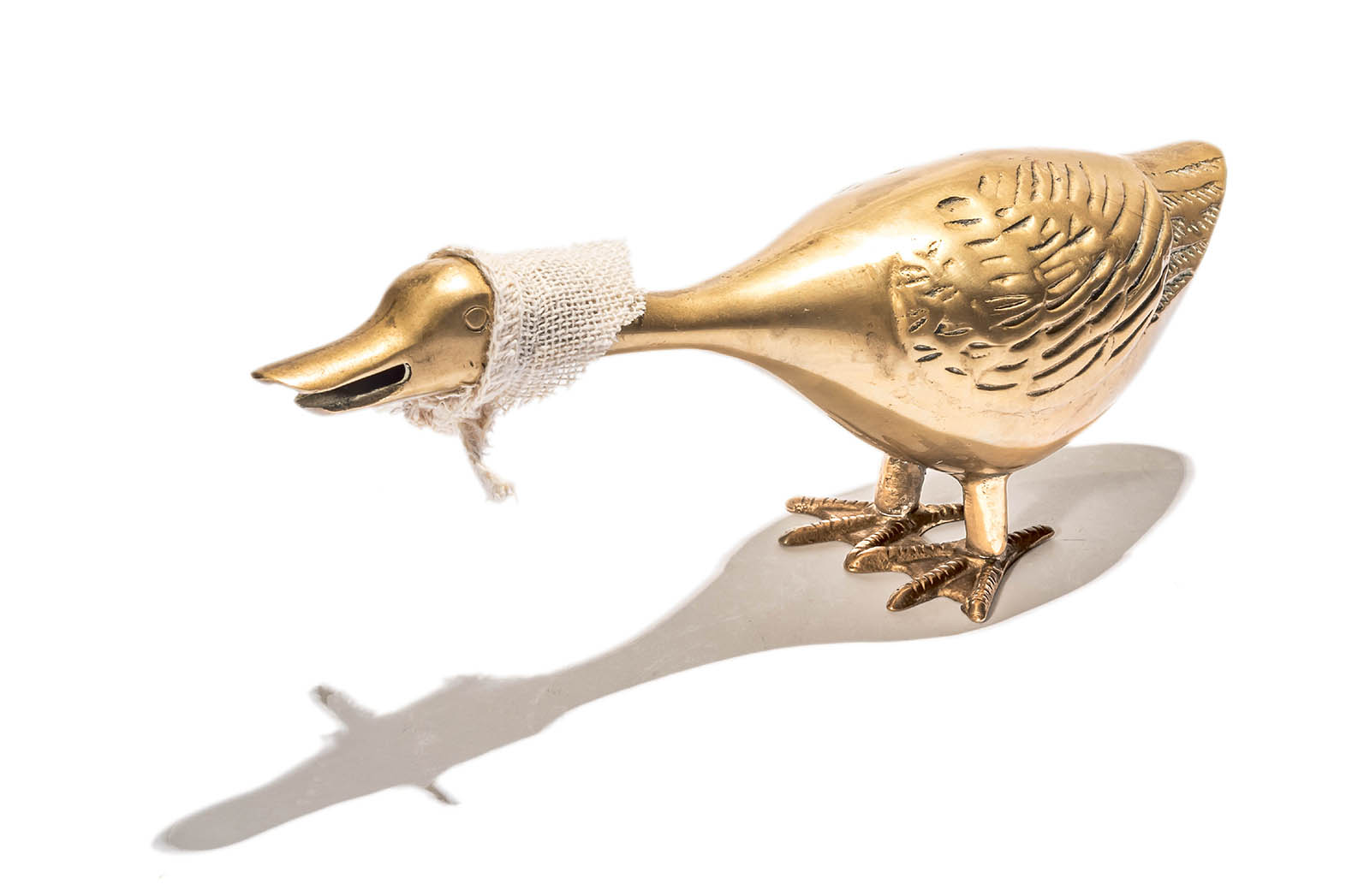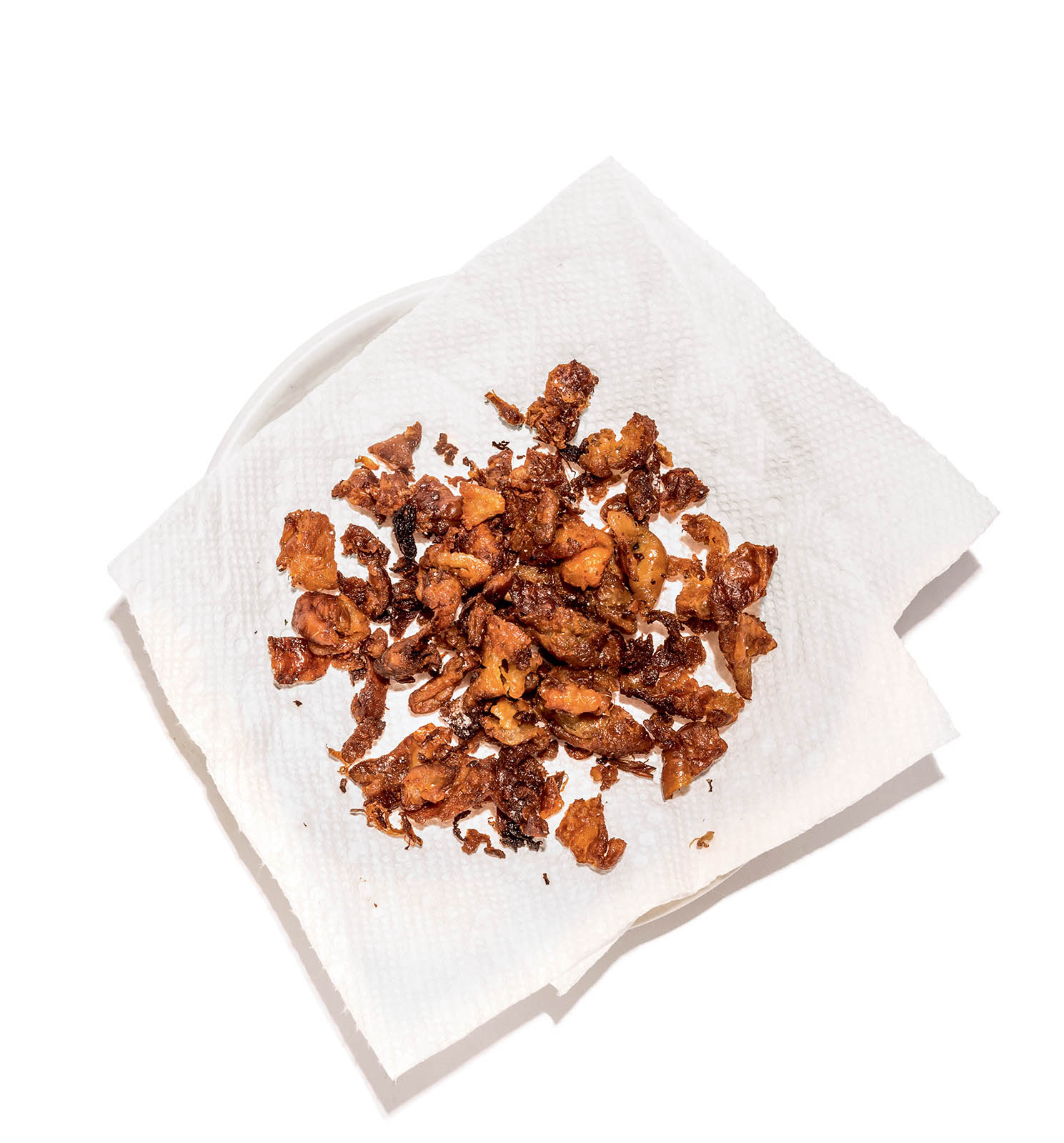
By Éric Ripert

It’s not as bad as it’s made out to be!
I’ve been invited by friends many times over the years to celebrate Shabbat and Passover, and gefilte fish is always served. When I first tried it, friends warned me that it tasted like a bad pike quenelle—so naturally, I had pretty low expectations. But I’ve been pleasantly surprised on many occasions. When prepared properly, gefilte fish is moist, light, and full of flavor.
carps for kids
The Carp in the Bathtub is, of course, the greatest work of children’s literature ever written about gefilte fish. Originally published in 1972, it tells the tale of a daring quest to rescue a fish before it is gefilted. Barbara Cohen’s story, set in 1930s Brooklyn, is atmospheric and funny and deliciously illustrated by Joan Halpern in wavy-lined, stripey, pointillist, slightly psychedelic black-and-white style.
The story: Every year before Passover, Mama brings home a live carp and keeps it in the tub for a week, so it will be extra fresh and tasty when served at the Seder. One year, nine-year-old Leah and her brother, Harry, feel that this season’s carp is special: friendlier and shinier and more bright-eyed than past carps. He even swims to the edge of the tub to visit the children whenever they enter the bathroom. Cohen writes: “Every time Harry or I had to go to the toilet, we would grab a crust of bread or a rusty lettuce leaf from the kitchen. While we sat on the toilet, we fed the bread or the lettuce leaf to the carp. This made going to the bathroom really fun, instead of just a waste of time.”
The kids name the carp Joe and resolve to save him, hiding him temporarily in their recently widowed neighbor Mrs. Ginzburg’s tub. Alas, their father orders them to bring Joe back, despite their big “fish are friends, not food” pitch. “It’s your mother’s fish and it cost her a lot of money,” he tells them. They return the fish. Their mother kills it. This is a metaphor for the powerlessness of childhood. “We cried ourselves to sleep that night, and the next night, too. Then we made ourselves stop crying. After that, we felt as if we were years older than Mama and Papa.” This is a good lesson! Sometimes life is unfair, and we have to suck it up, like a filter feeder.
Thankfully, Papa understands the kids’ grief, and he gets them a cat.
Out of print for years (I blame the vegetarians and helicopter parents), The Carp in the Bathtub was republished by Kar-Ben in 2016; you should absolutely possess it, whether you have children or not. It is notable, however, that the greatest work of children’s literature ever written about gefilte fish does not actually involve eating gefilte fish.
Marjorie Ingall
Gefilte Fish
Makes 14 patties; serves 6 to 8
For the Poaching Broth
12 cups (3 liters) water
¾ cup (180 milliliters) dry white wine
1 medium carrot, coarsely chopped
1 celery stalk, coarsely chopped
1 medium yellow onion, coarsely chopped
1 leek, white and light green parts only, coarsely chopped
1 teaspoon whole black peppercorns
5 sprigs thyme
2 teaspoons kosher salt
1 garlic clove, smashed
2 bay leaves
1 tablespoon (15 milliliters) fresh lemon juice
½ cup (28 grams) packed fresh flat-leaf parsley leaves and stems
For the Gefilte Fish
1½ medium carrots
1 medium yellow onion, cut into chunks
1 pound (455 grams) skinless white-fleshed fish fillets, such as cod, striped bass, carp, pike, or halibut
½ pound (227 grams) skinless salmon fillets
2 large eggs, beaten
5 tablespoons (40 grams) matzo meal
2 teaspoons vegetable oil
2 teaspoons kosher salt
¼ teaspoon freshly ground black pepper
1 teaspoon lemon zest
Make the poaching broth: Combine all the broth ingredients in a Dutch oven or other large, deep pot. Bring to a boil over high heat, then reduce the heat to medium-low, cover with the lid ajar, and simmer for 30 minutes, skimming the surface occasionally to remove any impurities. Strain the broth through a fine-mesh sieve set over a large bowl. Discard the solids and return the broth to the pot. Cover and set aside.
Make the gefilte fish: Cut the half carrot into chunks. Place the carrot chunks and onion in the bowl of a food processor and pulse until the vegetables are finely chopped, being careful not to liquefy them. Transfer the vegetables to a large bowl. Working in two batches, place the fish in the food processor and process until it is finely chopped but not mushy, then transfer it to the bowl with the carrot and onion.
Add the eggs, matzo meal, vegetable oil, salt, pepper, and lemon zest and stir well to combine.
Return the poaching broth to a simmer over medium-low heat. Rinse your hands in a bowl of cold water and shape a heaping ¼ cup (about 72 grams) of the fish mixture into an oval-shaped patty. Set the patty aside on a plate and repeat with the remaining fish mixture.
Lower the remaining whole carrot and the fish patties into the broth using a slotted spoon (depending on the size of your pot, you may have to do this in two or three batches; you don’t want the patties to crowd one another). Cover and simmer for 20 minutes, until the patties are firm and cooked through (when you cut one in half, the center should be opaque). Remove the carrot and the patties from the pot and transfer to a plate to cool. If cooking in batches, repeat with the remaining patties. Once the carrot is cool enough to handle, slice it into thin rounds.
Serve the gefilte fish warm or at room temperature, topped with the sliced carrot rounds and with horseradish on the side. If you’re making the gefilte fish ahead of time, allow the patties to cool in a large container, then submerge them in the cooled poaching broth and refrigerate for up to 2 days until ready to serve.

By Jeffrey Yoskowitz

If you asked Yidn from the Old Country about their most delectable, ultimately special meal, the answer would most certainly have included goose. Goose was the aspirational Eastern and Central European Jewish protein. Not chicken. Not beef. In Romania, Jews made that now famous pastrami we associate with Jewish deli by curing goose meat, then rubbing it with spices, then smoking it. Roasted goose was the coveted main during German and Eastern European Hanukkah feasts, with potato latkes fried in the goose’s fat served alongside it. The liver from the Hanukkah goose (aka foie gras) was usually stored for Passover.
Goose was a central feature of Yiddish culture and its food traditions. In a classic Sholem Aleichem story from 1902 fittingly titled “Geese,” the female Jewish protagonist takes the reader through the process of purchasing young geese in October and fattening them up for winter for their meat, fat, and down feathers.
The realities of twentieth-century America, however, forever altered Jewish eating. Beef was cheap. Chicken was even cheaper. In 1948, A&P supermarkets hosted the “Chicken of Tomorrow” contest to develop a new breed of chicken—pretty close to what we’re eating today. Unlike geese, the chicken of tomorrow could be held in captivity and fed nothing but corn and grain. Stalwart Jewish goose lovers attempted illegally raising geese in their tenement backyards in the Lower East Side, but eventually the forceful powers of Americanization (and sanitation) won out.
As industrial farming took root, goose went from being the choice meat of the Jewish community to a relic of the Old World, something referenced by cranky old Jewish men lamenting the state of the world, an erstwhile Dickens novel or Sholem Aleichem story. But that shouldn’t negate the importance of geese to Jewish gastronomic history.
By Joshua Malina

Mine eyes smell onions: I shall weep anon.
—William Shakespeare
But these are the onions of gribenes; and my tears signal joy!
—Joshua Malina
For me, the sine qua non of Jewish food would have to be gribenes. They are deceptively simple fare—chicken (or goose) skin and onions fried in chicken fat (see schmaltz). You can’t go wrong with these ingredients. The snack’s origin is shrouded in mystery, but apparently it all began somewhere in medieval Germany. I picture the shtetl version of the invention of Reese’s peanut butter cups. A Teutonic balaboosta was rendering goose fat, when—oy!—some onions fell into the pan, and the kosher version of pork rinds was born.
My own connection to the food goes back to my childhood. My paternal grandma, Jean Malina—aleha ha-shalom—used to make gribenes as a treat every Pesach. My family would arrive for Seder, and she would take me aside and hand me a plastic container filled to the brim with crispy goodness. I was then left to dispense the tasty morsels to the rest of the mishpacha. That I was given container privileges is my strongest argument that I was her favorite.
I didn’t start cooking myself until my wife, Melissa, got pregnant, so—to my great regret—I didn’t learn to prepare gribenes at Grandma Jean’s side. But I do consider it a tribute to her memory when I make them every Pesach. I like to think that the fumes reach up to Gan Eden, and she knows she’s remembered with love.
Want to make them yourself? You’ll need a pound of chicken skin with a little fat on it (two pounds is twice as good). This you should accumulate during the year, when you make soup. Cut the skin into small pieces and place it in a pan over low heat. Salt it, add a tablespoon of water, and cook for about 20 minutes. When the fat starts to render, toss in a couple of chopped-up onions and cook until crispy. It takes a long time! Read a good book.
For an elegant vegetarian version, simply don’t eat anything at all.
If gribenes be the food of love, fry on!